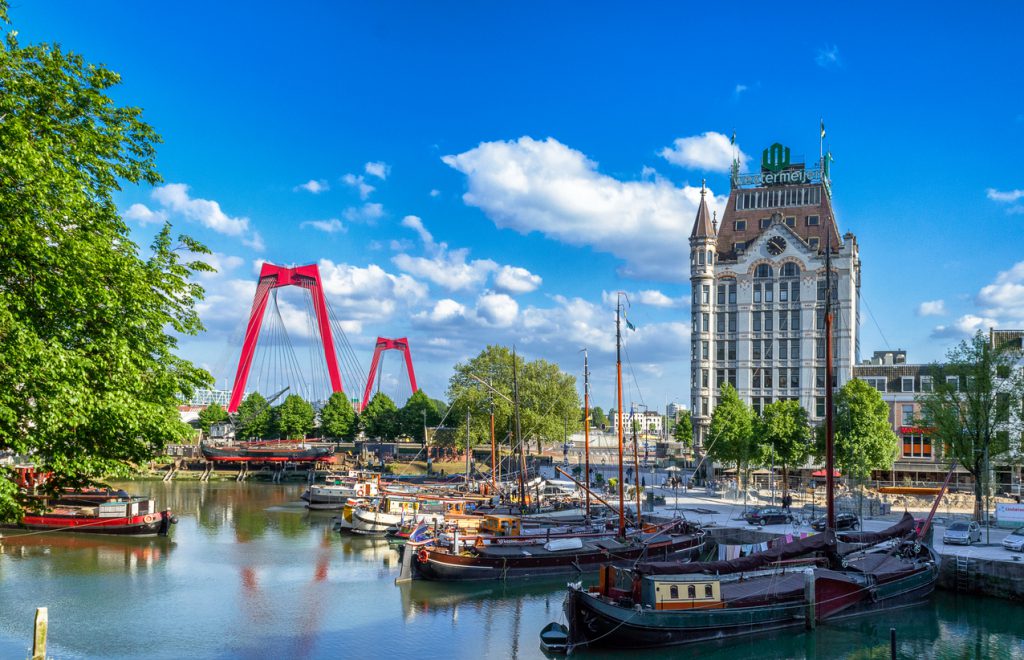When you see photos of Doha or Dubai, one of the first amazing things you’ll notice are their architectural wonders, skyscrapers, and civil engineering that seem almost impossible. It’s part of their charm, and it’s an aspect that has transformed them into prime tourist destinations. And yet, in Holland, not more than an hour from Amsterdam, is Rotterdam, an authentic architectural jewel that will also leave you speechless. The centre of the city was completely levelled by the Nazis during the Second World War, meaning that architects and visionaries from across the globe were free to use it as a testing ground for new architectural and urban solutions.
The world’s most creative and audacious architects flocked to the city after the war, filled with groundbreaking ideas that had never before been seen on the old continent. Rotterdam became a lab for the first steps in designing the cities of the future.
Although the city still contains traces of its pre-20th century history, its modernist buildings and industrial zones are what really gives it a distinctive character. Neighbouring Amsterdam is arguably more pretty and charming, but Rotterdam beats it hands down in terms of interest and attractiveness to tourists.
Not many people know that Rotterdam is one of the most important logistical and economic centres in the world. Its cargo port is the second-largest in the world, beaten only by Singapore. It was also the first large European city to create a pedestrian shopping area. It boasts a rich and diverse cultural heritage, and in 2001 was named European Capital of Culture.
One of its main tourist attractions is the Standhuis, or town hall, constructed between 1914 and 1920 and one of the few buildings that survived Nazi bombing.
One of Rotterdam’s most emblematic buildings is the Market Hall, one of the best examples of the city’s modern architecture. It takes the form of a giant airplane hangar, and inside is decorated with giant coloured panels. You’ll also want to visit the celebrated cube houses, an architectural curiosity designed by Dutchman Piet Blum. The houses represent a tree and, all together, a forest. One has been transformed into a museum to deal with the large volume of visitors to the area.
Another must-see is the Van Boijmans Beuningen Museum, one of the most important in the country and home to works from Van Eyck, Van Gogh, Rubens, Rembrandt and Bosch, among others.
Even if you’re not trying, you’ll probably come across the Erasmus Bridge, the longest suspension bridge in the world and the tallest in Holland. Locals call it “the swan”. It offers some great views, but they won’t compare to what you can see from the Euromast Tower. This viewing tower stretches up 185m, and from the top, you’ll be able to see the whole city and its surroundings.
The best remaining trace of the middle ages is the Grote of Sint-Laurenskerk, erected between 1449 and 1525. Although it remained standing during the bombings, it had to be carefully restored to repair the damage it suffered. It provides a beautiful contrast to all the modern architecture that surrounds it.
In front of the church, you can take a photo or two in front of the statue of Erasmus of Rotterdam, the most important historical figure in the city. The statue of the famous humanist, philosopher and philologist is the oldest bronze effigy in the Netherlands.






